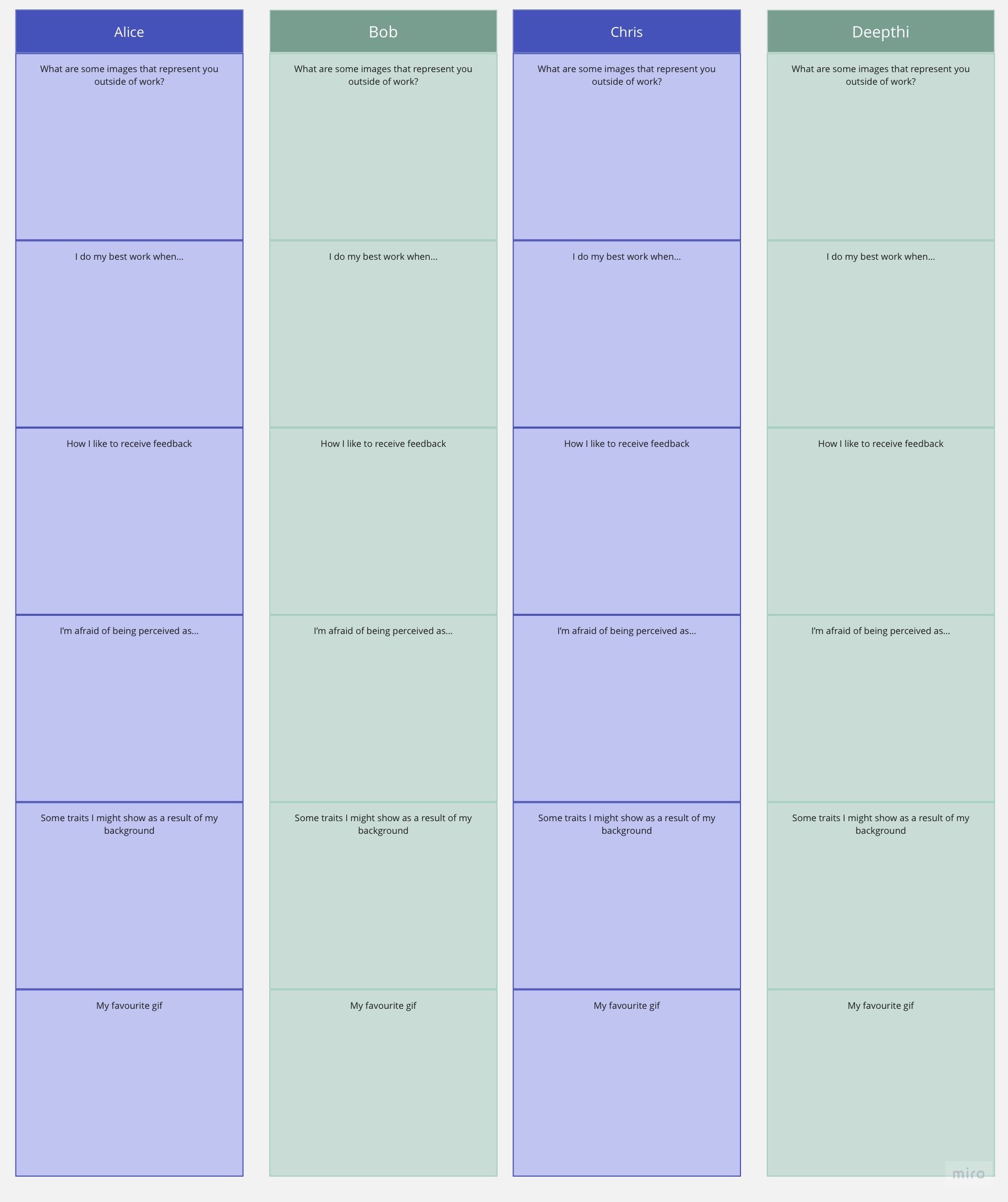Getting to Know You Sessions: how we got to know our teams at Unmind

Effective management is built on trust, so you need to build good relationships with your team. So how do you get to know your teammates? Shortly after I joined Unmind, I was introduced to a useful mechanism for getting to know the team. (Special shoutout to the wonderful Engineering Leads I worked alongside at Unmind who introduced me to this, namely Anastasia López, Anjana Hewage, James Privett, Klara Pum and Wing-Hou Chan)
The “Getting to Know You” session is a 25- (or 50- if you’ve got a large team) minute meeting for the whole team, running through a board where everyone answers identical questions. Some of the questions are designed to be challenging - they can be a little scary, but will give everyone a chance to get to know each other much more quickly.
Each member of the team should have their own column, and each column should have the same prompts. Here’s an example of what one of the columns might look like.

I’ve also created a template on Miro that you can adapt (link at the bottom of the page). I’ve put in some sample prompts already, but feel free to modify them as you see fit. Here are some example questions and prompts you might want to use.
- What are some images that represent who you are outside of work?
- The best way I like to receive feedback
- Some traits I might show as a result of my background or culture
- I can do my best work when
- I am afraid of being perceived as
- You’ll know I’m grumpy when
- How I best like to treat myself
- My favourite emoji
- My favourite gif or meme
- The thing I’m proudest of
- A thing that makes me smile
- One food I can’t live without
- Who would be your top guest at a dinner party?
Format
- Before the meeting, prepare the board with a column for each person present, with the same prompts for everyone.
- At the start of the meeting, give everyone 5 minutes to fill in their column.
- Once everyone has completed their column, go around the room and have each person in turn talk through their answers (i.e. give additional context — nobody needs to justify what they have written).
- Afterwards, store the results somewhere where everyone on the team has access to them and they can be used for future reference.
Tips
- Keep it fun. I strongly recommend having at least one “fun” question to keep things light.
- Make sure you have a column for yourself. Building the relationship with your team works both ways.
- Be vulnerable. This is an excellent opportunity to show vulnerability with the team and help them understand you and your approach. It will also encourage them to be more open with their own answers.
- Use your judgement on whether to lead from the front and go first or let others do so. Some groups will be anxious about an exercise like this and need some encouragement, so talking about your own column first will give them an idea of what’s expected and make them more comfortable. For other teams, there may be an opportunity to allow others to lead.
- Give people space to talk about themselves.
- Be kind. In asking people to open up you are also asking them to trust you, and that willingness needs to be rewarded.
- Store the results for future reference. This might be in Miro, Notion, Confluence or wherever you store your team’s shared documentation.